Cosmetic lower eyelid surgery, also known as lower blepharoplasty, or eye bag surgery, is one of the most common cosmetic surgical procedures performed around the world. The appearance of puffy eye bags that are always present is caused by bulging orbital fat, which is often genetic in nature, as well as being associated with facial aging. Since there is a genetic component of this condition, many younger people have under eye bags.
The most effective and long-lasting procedure for puffy eye bags is lower eyelid surgery. With its popularity, lower eyelid surgery may appear to be a generic procedure, but in reality, it is far from generic. Many surgeons performing this type of surgery take a “one-size-fits-all” approach, resulting in a large number of people requiring corrective procedures by specialists such as myself. The lower eyelid is a complex structure, and the art is in devising the best strategy to achieve the best possible result, while minimizing the risk of complications.
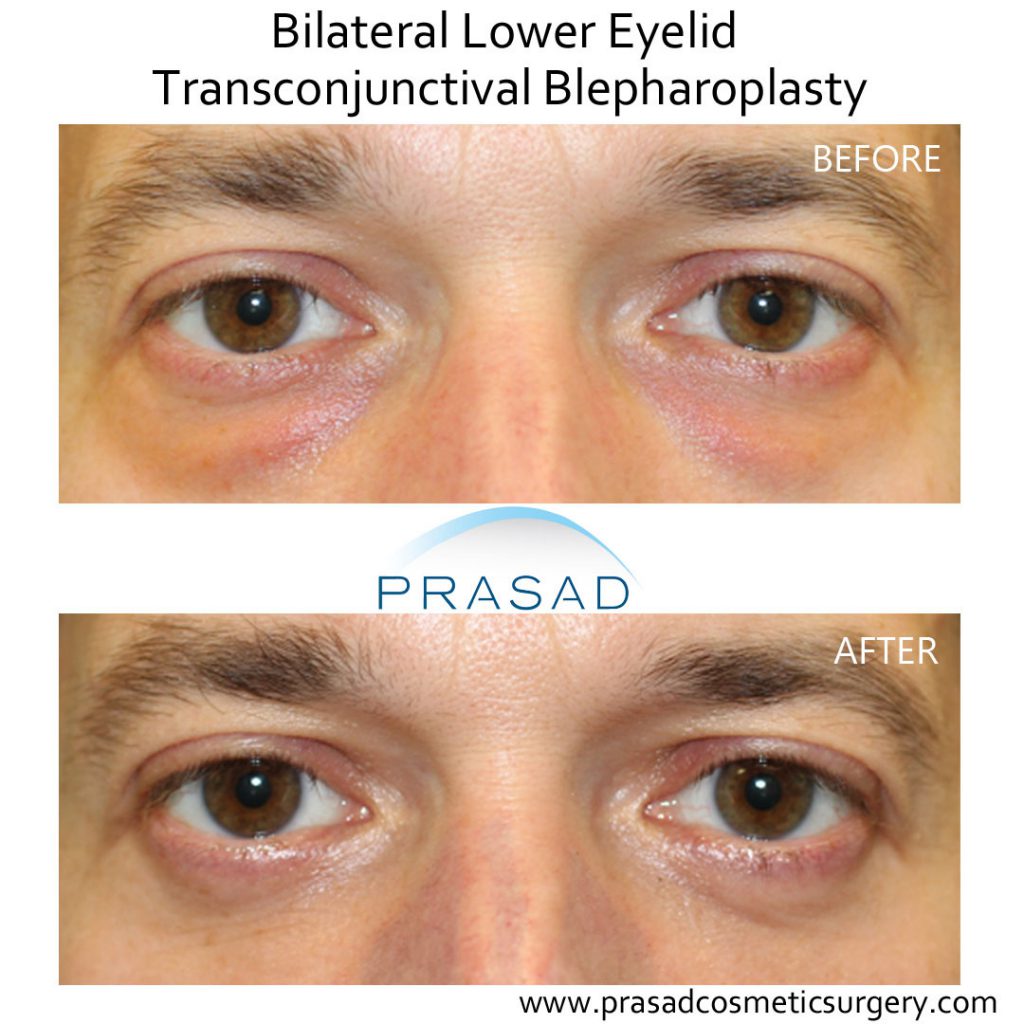
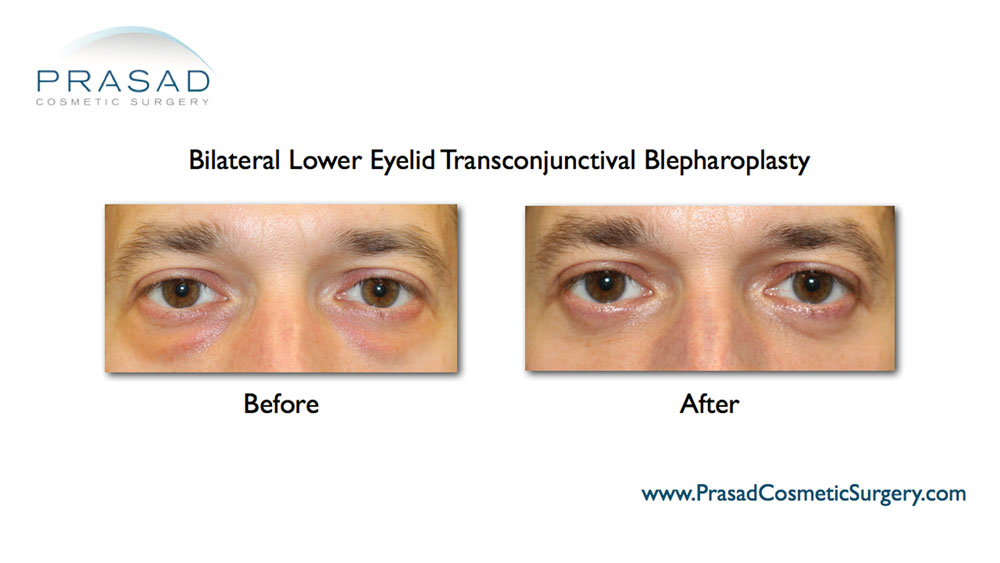
I’ll go over how I evaluate my patients, and tailor the procedure to reduce the risks associated with lower eyelid surgery. As an oculoplastic surgeon who specializes in cosmetic eyelid surgery, I perform upper and lower blepharoplasty on a regular basis, as well as eyelid revision surgery for complications after surgery performed by other doctors. Throughout my career, I’ve observed that many complications after lower eyelid blepharoplasty occur because the surgeons performing this procedure are not fully aware of avoiding the compromise of support structures inherent to the lower eyelid anatomy.
Common Risks with Eye Bag Surgery
- Lower eyelid retraction
- Ectropion
- Entropion
Lower Eyelid Retraction
Lower eyelid retraction is one of the more common risks of lower eyelid blepharoplasty. The degree of eyelid retraction can be so great that the eyes appear rounded after surgery to the extent that the distinctive eye shape is lost. I’ve seen patients who had this problem after surgery and their original surgeon denied that the patient’s lower eyelids were rounded. It appears that rounded lower eyelids have been “normalized,” in the same way that high brows and overfilled lips have. This is why during consultations patients frequently express their disdain for the appearance of some famous people they believe look like “deer in the headlights.”
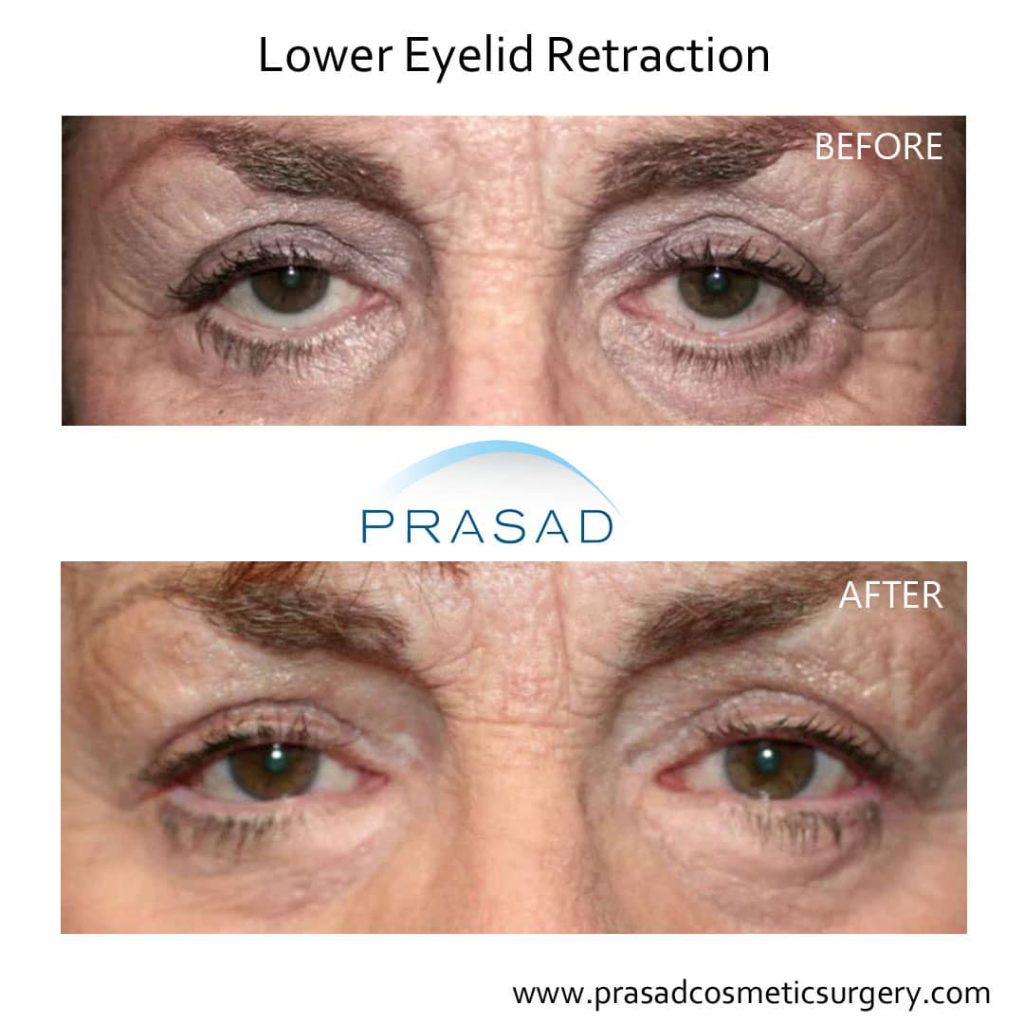
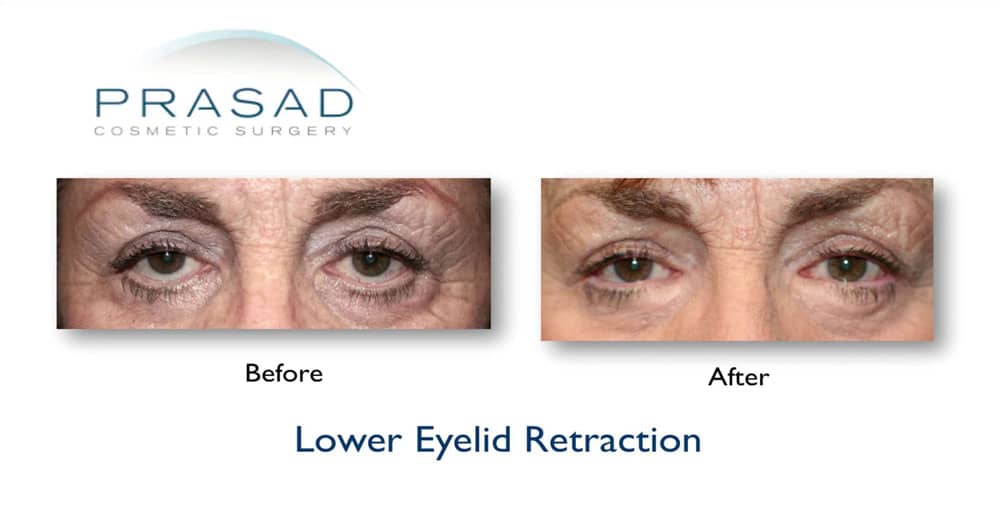
So what is causing lower eyelid retraction? Transcutaneous blepharoplasty is the most commonly used surgical technique to address the prolapsed orbital fat under the eyes that causes puffy eye bags. To access the fat pockets responsible for puffiness, an incision is made in the lower eyelid, just below the eyelashes. General plastic surgeons frequently perform transcutaneous blepharoplasty. This method has the potential to weaken the eyelid structure by separating the anatomic layers, which are stronger when intact. Furthermore, there is a risk of impairing the function of the orbicularis oculi muscle, which acts as a belt to support the lower eyelid. Lower eyelid retraction occurs when the lower eyelids sag or pull downwards, making the eyes appear rounded rather than maintaining their original shape.
Ectropion
The lower eyelids may also rotate outward, causing irritation from exposure known as ectropion. Further worsening this compromise of the integrity of the lower eyelids is caused by the common practice of eyelid skin removal as a strategy to improve the appearance of fine lines and wrinkles. A common misconception held by many surgeons and the general public is that fine lines and wrinkles are a result of the excess lower eyelid skin, so many surgeons excise skin when performing transcutaneous blepharoplasty.
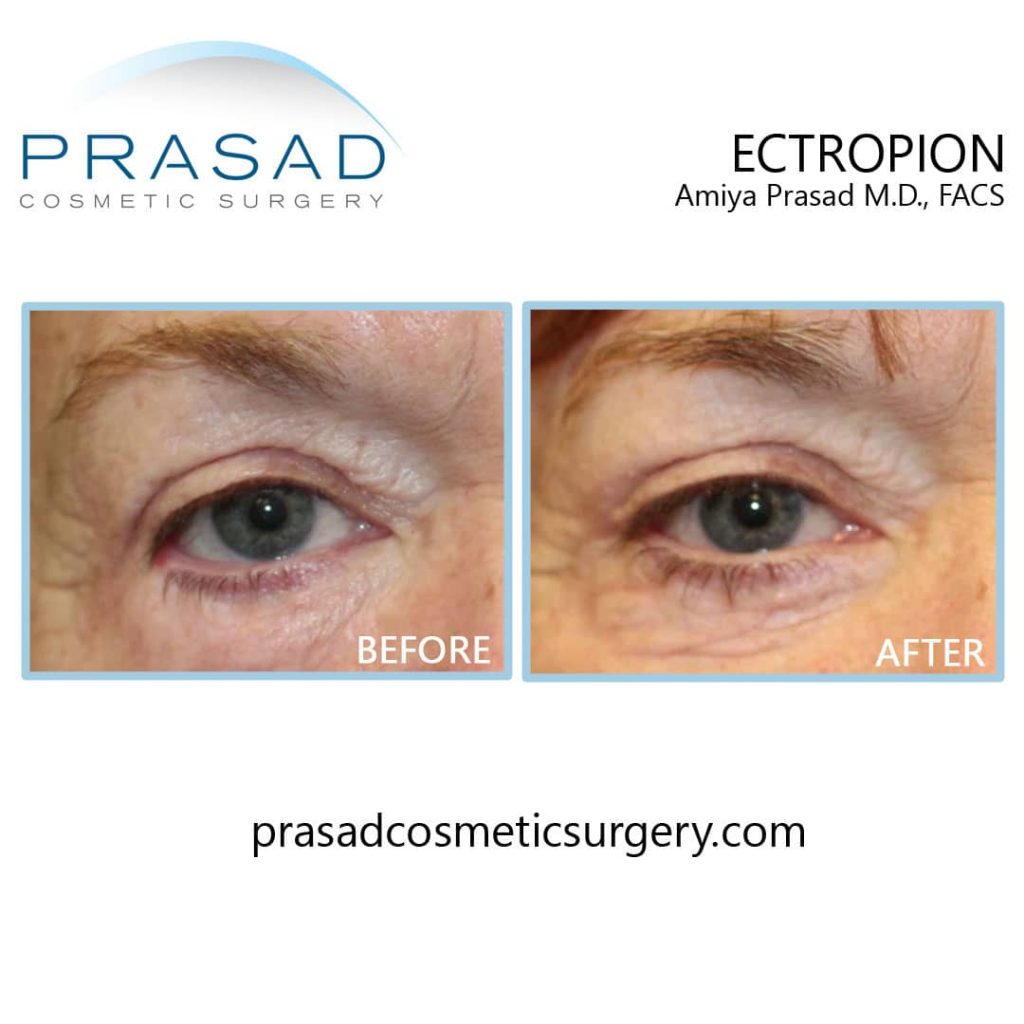
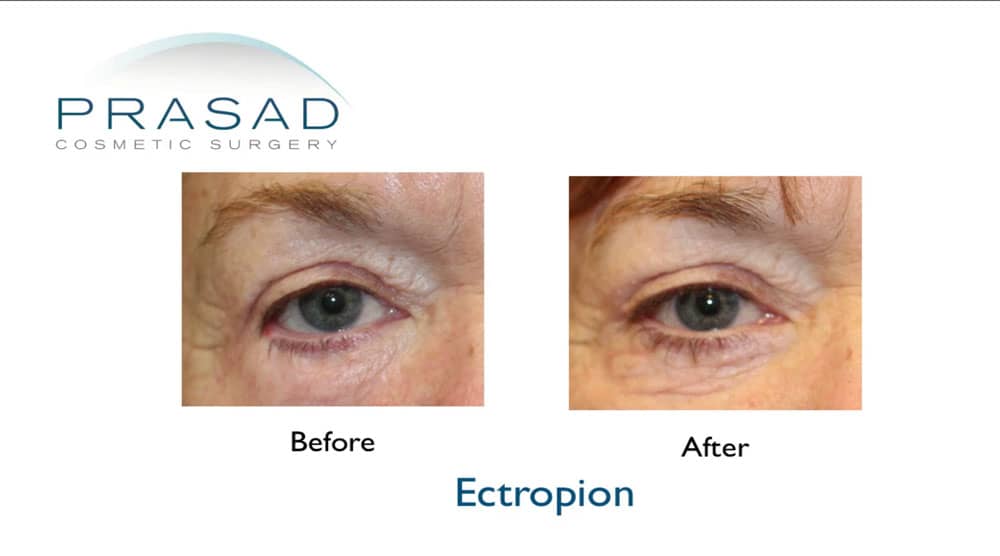
How Dr. Prasad Minimizes Lower Eyelid Surgery Complications
I approach lower eyelid retraction, ectropion, and entropion with one guiding principle in mind: anatomy restoration so eyelids are both attractive and functional. To reconstruct and provide vertical support for eyelid retraction, I must use tissue grafts such as dermocellular matrix grafts, and even skin grafts. I also need to repair the lateral canthal tendon, which is an anatomic structural connection to the bone. Each patient’s situation is unique, so it necessitates careful consideration. To improve my patients’ tissue healing, and their outcomes I use advanced wound healing techniques such as PRP or platelet-rich plasma and acellular matrix.
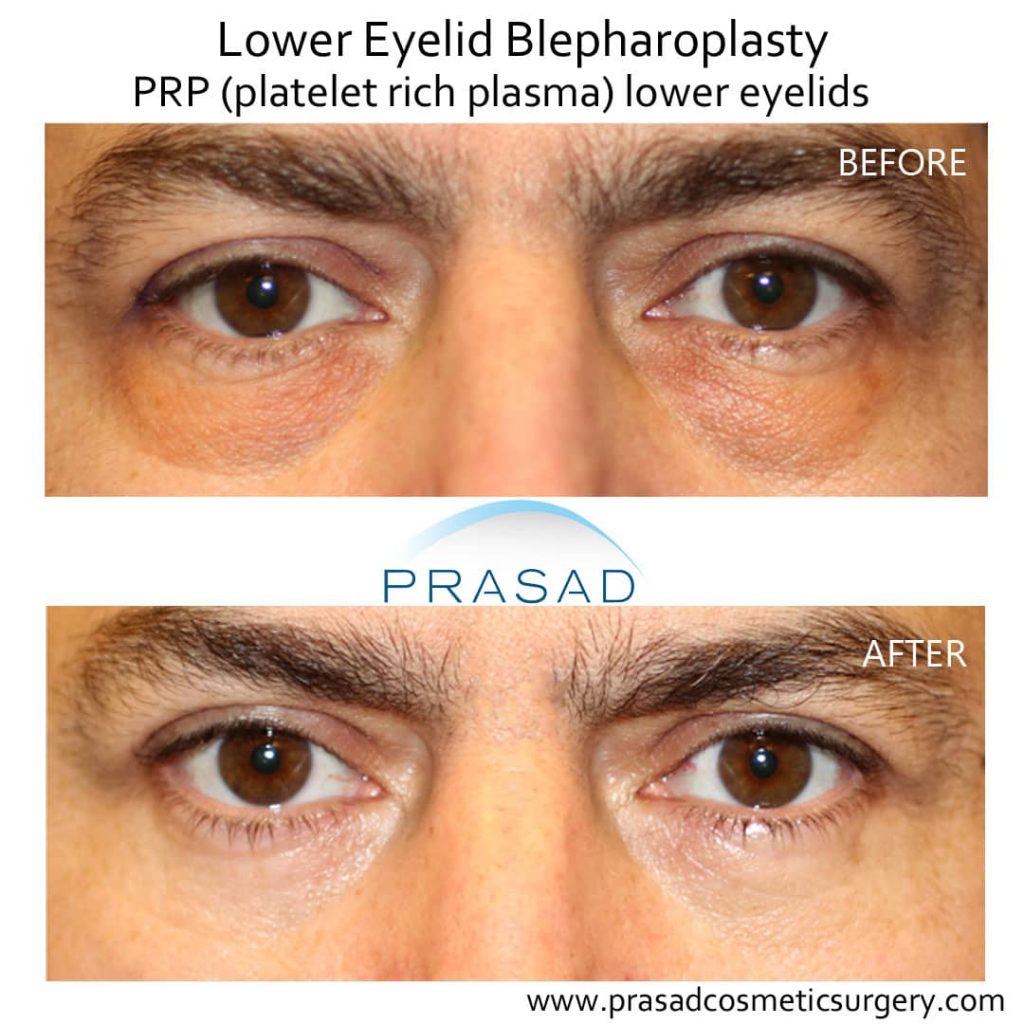
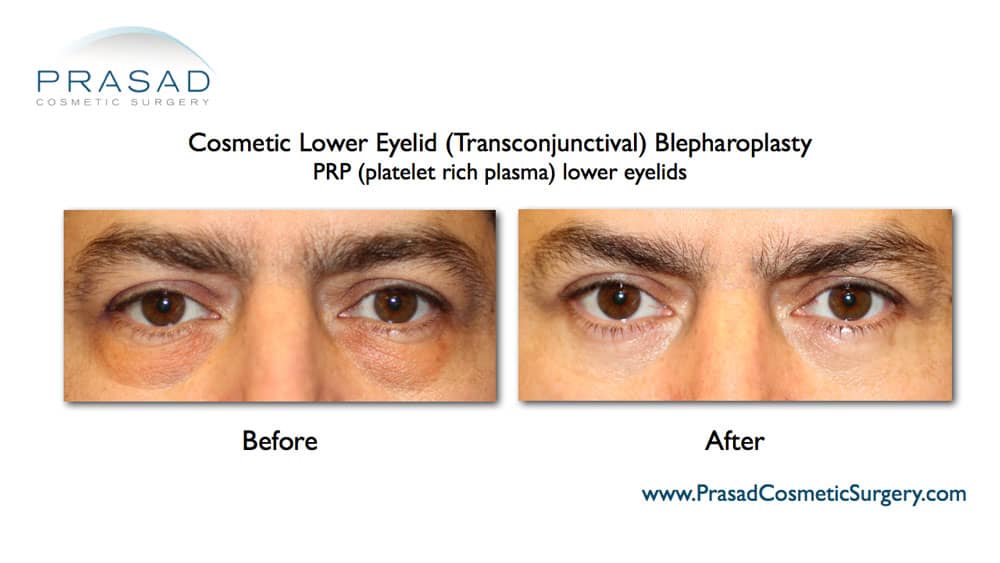
View more lower blepharoplasty before and after photos
Lower eyelid fat prolapse is frequently associated with a deficiency in the projection of the cheekbone and bone structure under the eyes. The paradox is that there is too much fat pushing forward while not enough bone is projecting forward. To address bone volume deficiency, I usually recommend hyaluronic acid filler placement at the bone level. Some doctors advise fat repositioning with lower eyelid surgery, where a small extension of fat still connected to the eye is stretched and bent over the bone to try to address this deficiency. This fat pedicle is usually too small to address hollowing, and the blood supply is kinked over the bony orbital rim, causing prolonged swelling, irregularities, or the fat simply dying as a result of the blood vessels being bent and compressed.
I use hyaluronic acid fillers such as Restylane and Juvederm to address hollowness in the lower eye area as well as the cheekbones to provide adequate volume and a more predictable result. I make sure my patients understand the connection between the bone structure around their eyes, and the eyes themselves so they can look their best.
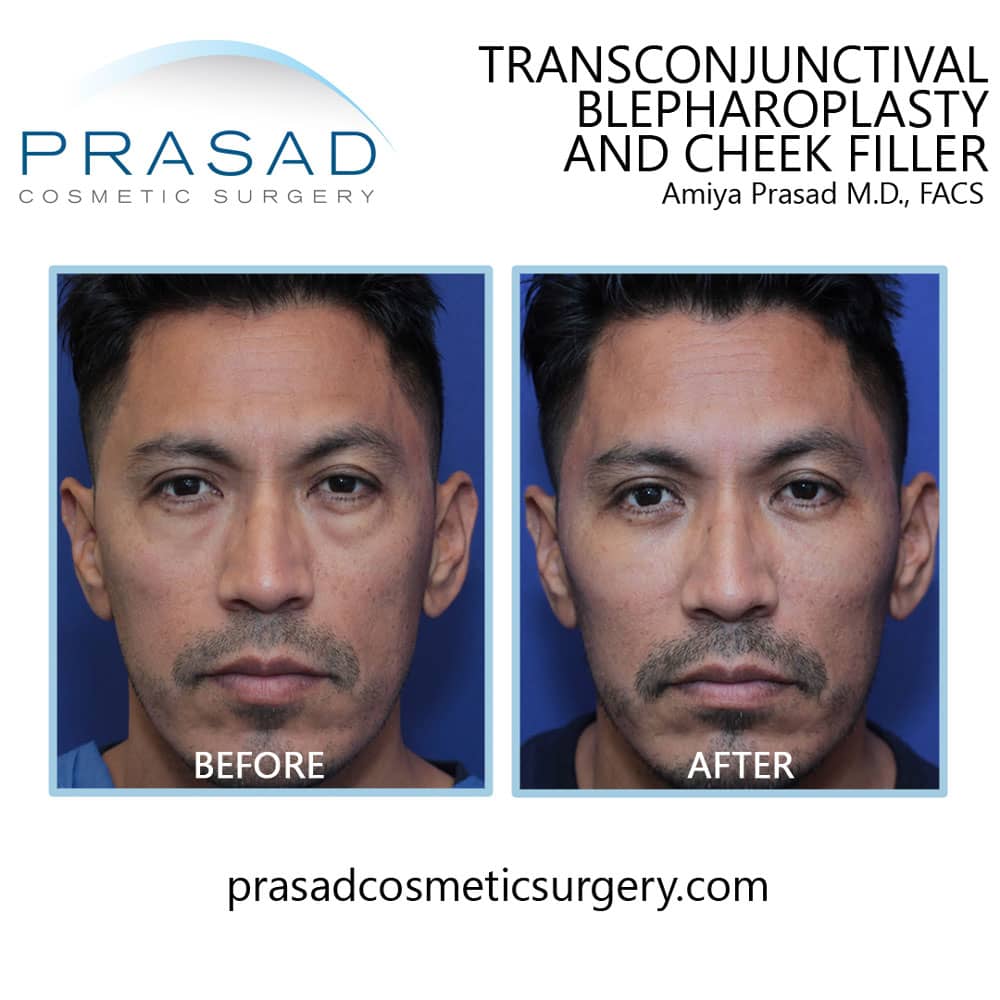
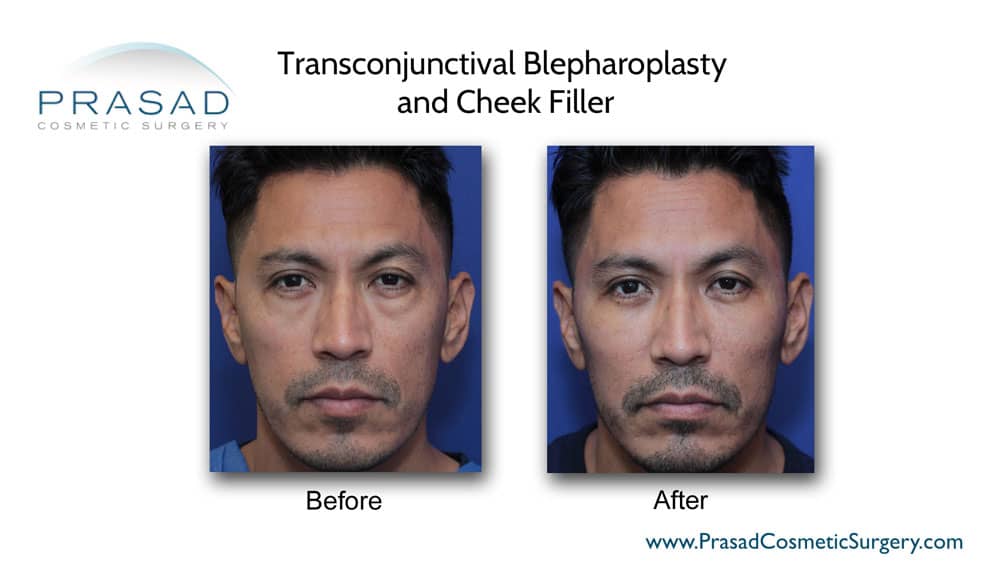
Of course, avoiding lower eyelid retraction and other complications is preferable to requiring extensive and costly revision surgery. Many people choose cheaper lower eyelid surgery to save money without understanding why the surgery is so inexpensive. Quality and low prices simply do not mix, so opting for less expensive lower eyelid surgery can result in much higher repair costs, not to mention the cost of time off work and travel expenses.
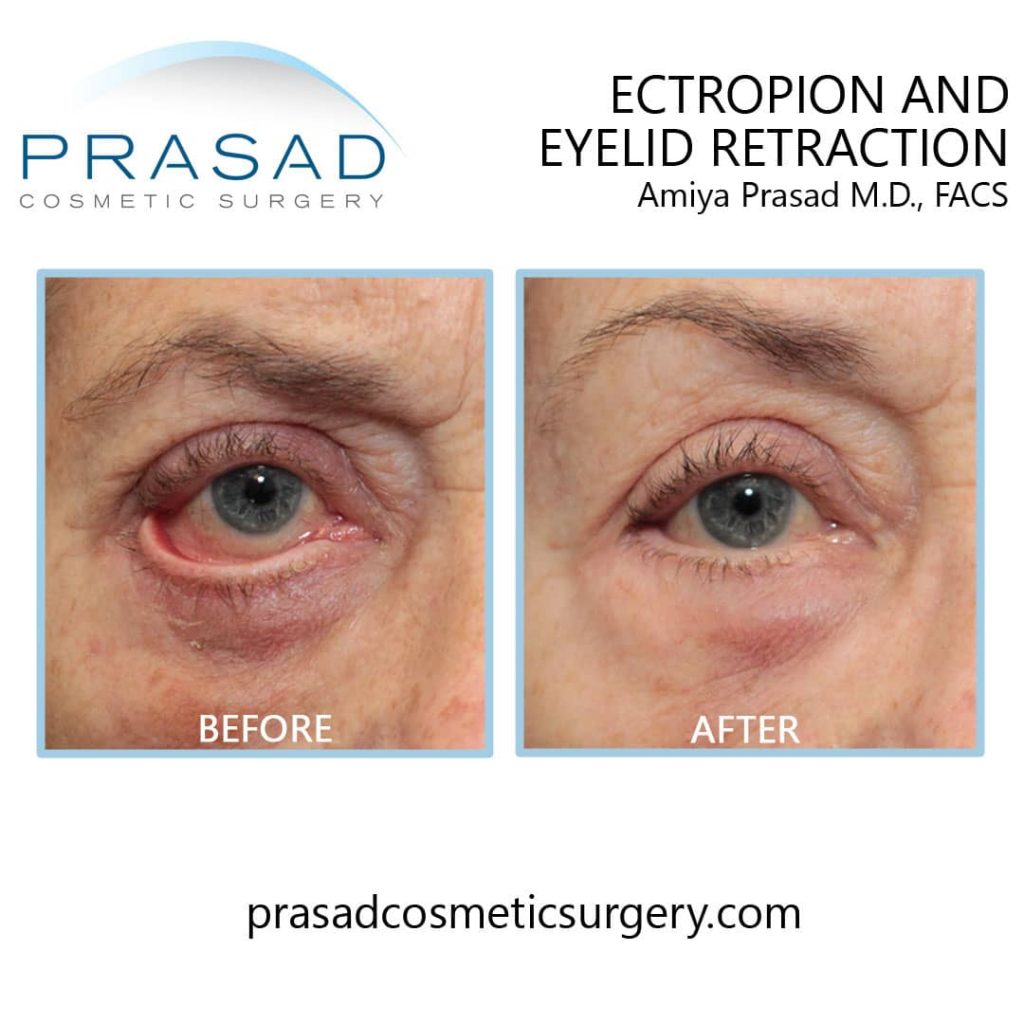
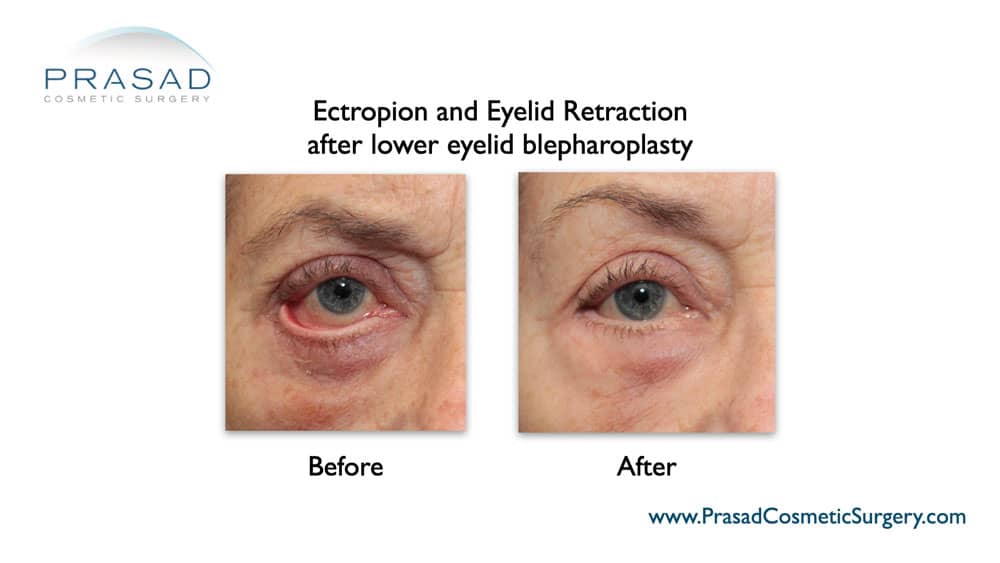
So, how can I reduce my risk of lower eyelid retraction? I begin by preserving lower eyelid support structures such as the lower eyelid skin and orbicularis oculi muscle. I use a specialized technique called transconjunctival blepharoplasty to preserve lower eyelid anatomy.
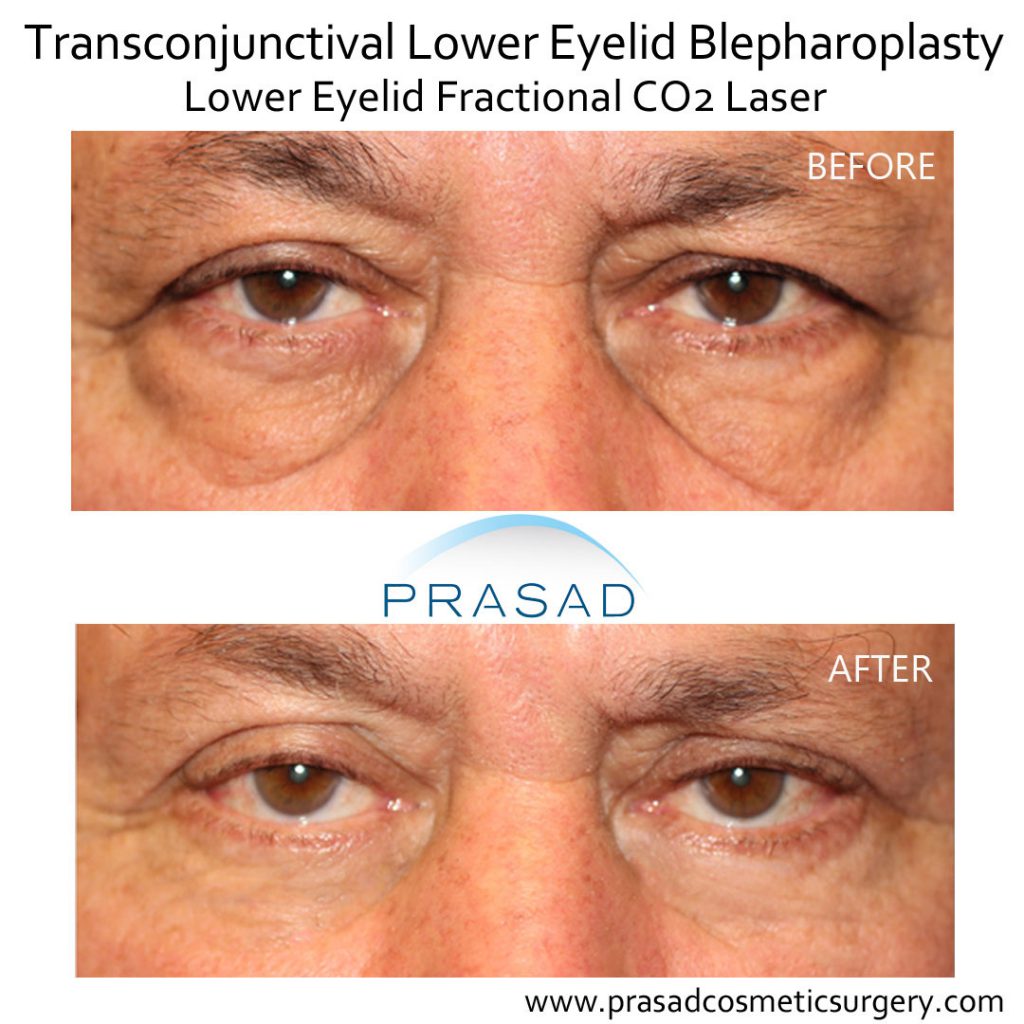
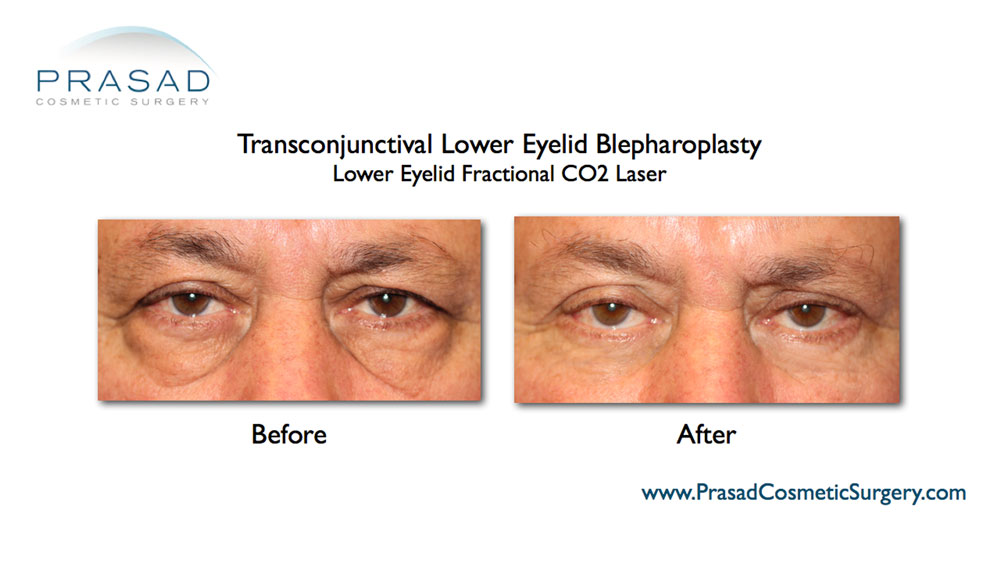
Transconjunctival blepharoplasty requires no external incision because the fat pockets responsible for under eye bags are sculpted from behind the eyelid. The lower eyelid skin and the orbicularis oculi muscle are completely preserved, and the results appear natural because there is no scar from an external incision, and no compromise in the support structure. I also avoid skin removal because under eye wrinkles and fine lines are caused by poor skin quality rather than an excess of skin.
For under-eye wrinkles (Read Under Eye Wrinkles Treatment Options), I improve skin quality by stimulating collagen production and resurfacing the skin. A laser or radiofrequency device can be used to induce collagen. Collagen is the protein that gives skin its strength. Furthermore, heat causes the skin to contract and tighten. I use platelet-rich plasma to boost collagen production and blood supply in the lower eyelid skin without using heat. Platelet-rich plasma, also called PRP, is the concentration of wound healing and growth factors present in the blood, which are activated when you have a cut.
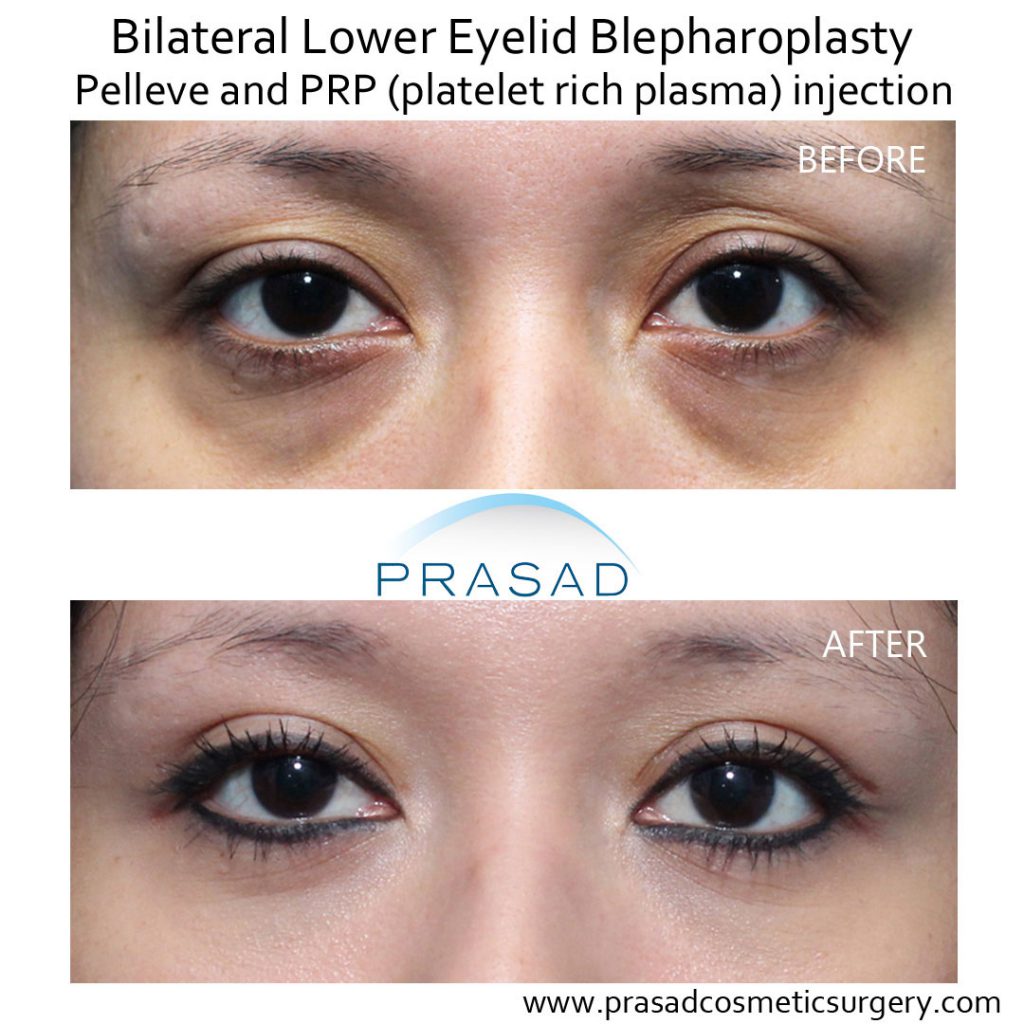
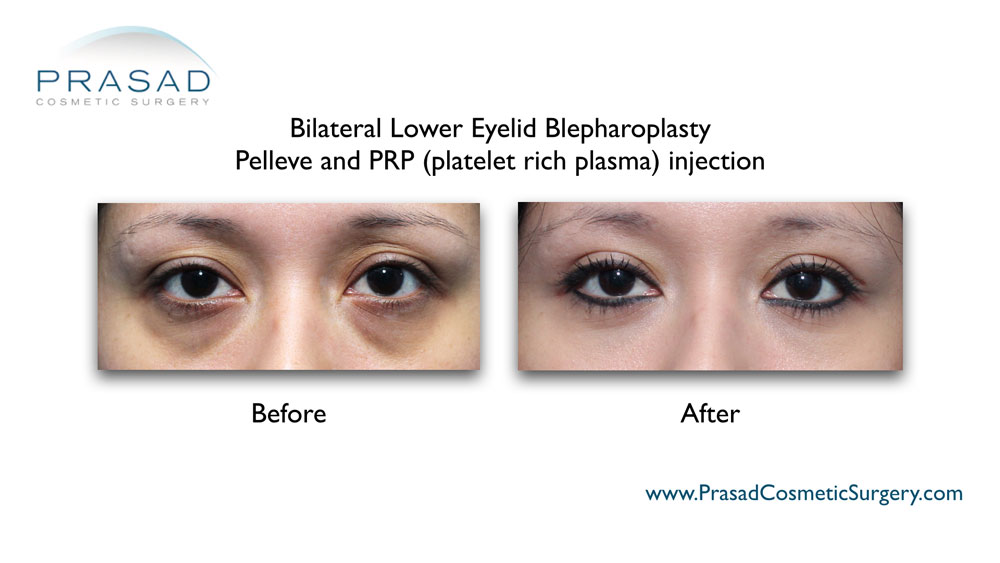
If there is redundant lower eyelid skin or a fold, I perform a skin pinch excision while still concerned with preserving the natural shape and character of the lower eyelids. I perform lower eyelid surgery under local anesthesia with LITE IV sedation, so patients are spared the stress and side effects of general anesthesia. Patients remain comfortable throughout the procedure in a twilight state of consciousness. Soon after surgery, they leave our office alert and happy. Most of our patients have little to no bruising, and are able to return to work within a week.
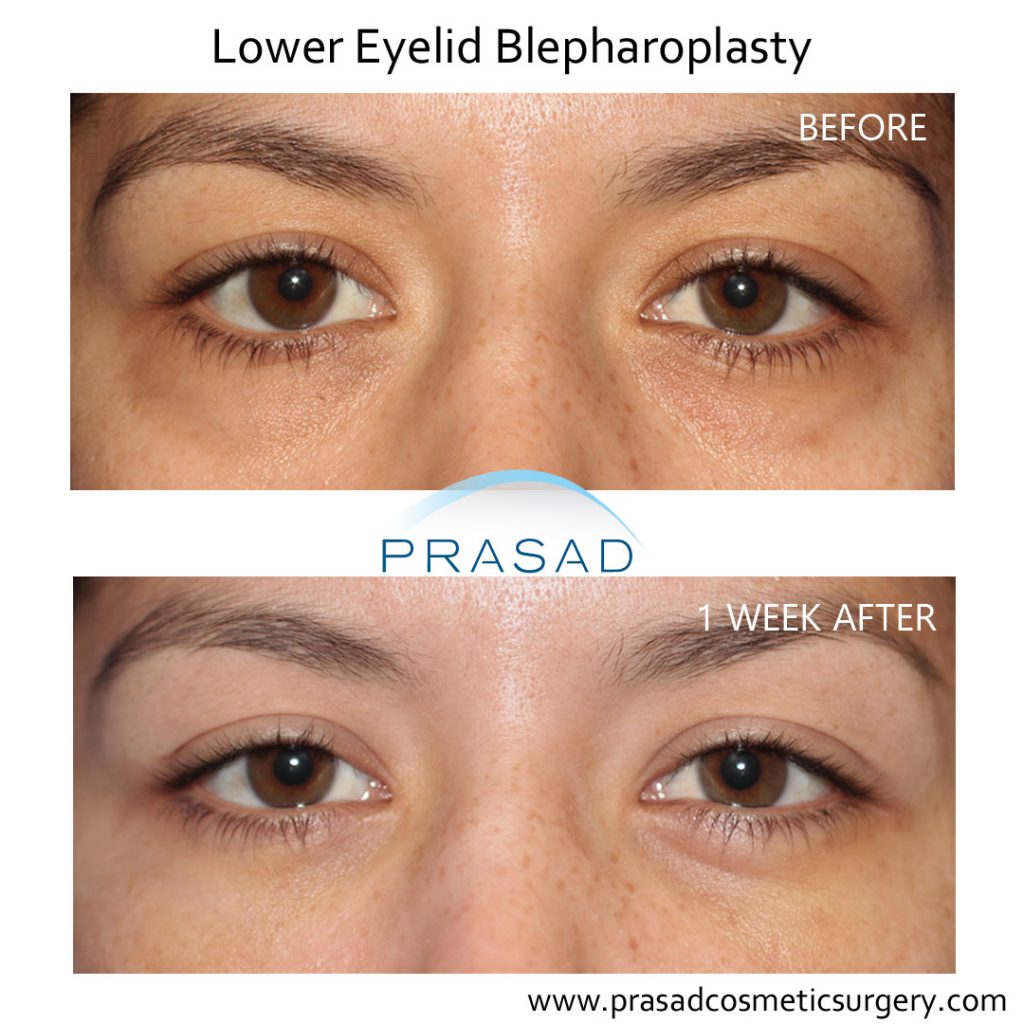
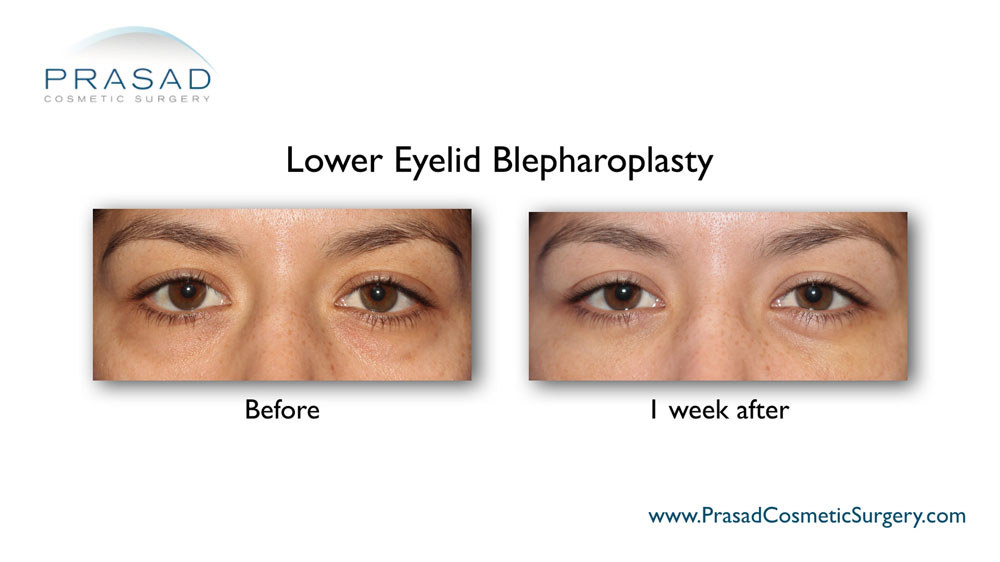
Read Lower Blepharoplasty Recovery
There are always risks with any surgery. The surgeon’s experience, expertise, and techniques can help to reduce risks. Coming from an ophthalmology background and understanding how to keep the shape and function of the eyelids healthy has been invaluable in my ability to help my patients undergoing lower eyelid surgery.
